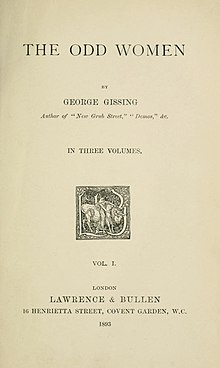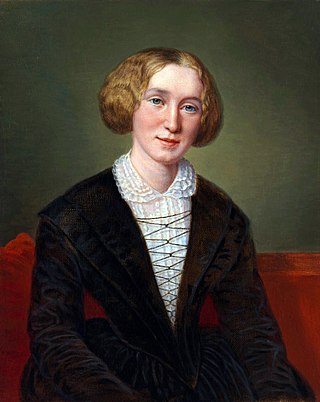
Mary Ann Evans, known by her pen name George Eliot, was an English novelist, poet, journalist, translator, and one of the leading writers of the Victorian era. She wrote seven novels: Adam Bede (1859), The Mill on the Floss (1860), Silas Marner (1861), Romola (1862–1863), Felix Holt, the Radical (1866), Middlemarch (1871–1872) and Daniel Deronda (1876). As with Charles Dickens and Thomas Hardy, she emerged from provincial England; most of her works are set there. Her works are known for their realism, psychological insight, sense of place and detailed depiction of the countryside. Middlemarch was described by the novelist Virginia Woolf as "one of the few English novels written for grown-up people" and by Martin Amis and Julian Barnes as the greatest novel in the English language.

Jane Eyre is a novel by the English writer Charlotte Brontë. It was published under her pen name "Currer Bell" on 19 October 1847 by Smith, Elder & Co. of London. The first American edition was published the following year by Harper & Brothers of New York. Jane Eyre is a bildungsroman that follows the experiences of its eponymous heroine, including her growth to adulthood and her love for Mr Rochester, the brooding master of Thornfield Hall.

Middlemarch, A Study of Provincial Life is a novel by English author George Eliot, the pen name of Mary Ann Evans. It appeared in eight installments (volumes) in 1871 and 1872. Set in Middlemarch, a fictional English Midlands town, in 1829 to 1832, it follows distinct, intersecting stories with many characters. Issues include the status of women, the nature of marriage, idealism, self-interest, religion, hypocrisy, political reform, and education. Despite comic elements, Middlemarch uses realism to encompass historical events: the 1832 Reform Act, early railways, and the accession of King William IV. It looks at medicine of the time and reactionary views in a settled community facing unwelcome change. Eliot began writing the two pieces that formed the novel in 1869–1870 and completed it in 1871. Initial reviews were mixed, but it is now seen widely as her best work and one of the great English novels.

The Bad Seed is a 1954 novel by American writer William March, the last of his major works published before his death.
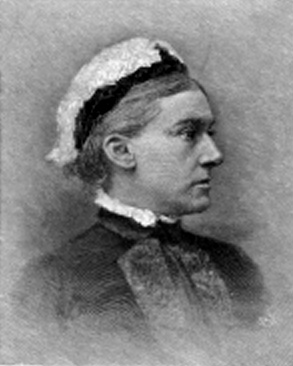
Rhoda Broughton was a Welsh novelist and short story writer. Her early novels earned a reputation for sensationalism, so that her later, stronger work tended to be neglected by critics, although she was called a queen of the circulating libraries. Her novel Dear Faustina (1897) has been noted for its homoeroticism. Her novel Lavinia (1902) depicts a seemingly "unmanly" young man, who wishes he had been born as a woman. Broughton descended from the Broughton baronets, as a granddaughter of the 8th baronet. She was a niece of Sheridan le Fanu, who helped her to start her literary career. She was a long-time friend of fellow writer Henry James and was noted for her adversarial relationship with both Lewis Carroll and Oscar Wilde.
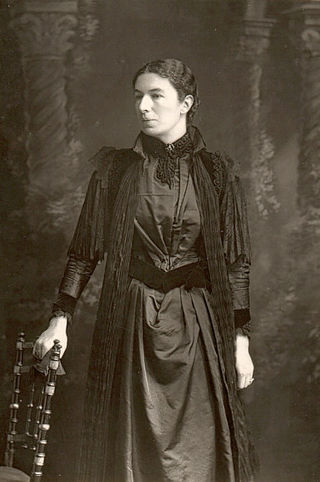
Mary Augusta Ward was a British novelist who wrote under her married name as Mrs Humphry Ward. She worked to improve education for the poor setting up a Settlement in London and in 1908 she became the founding President of the Women's National Anti-Suffrage League.

George Meredith was an English novelist and poet of the Victorian era. At first, his focus was poetry, influenced by John Keats among others, but Meredith gradually established a reputation as a novelist. The Ordeal of Richard Feverel (1859) briefly scandalised Victorian literary circles. Of his later novels, the most enduring is The Egoist (1879), though in his lifetime his greatest success was Diana of the Crossways (1885). His novels were innovative in their attention to characters' psychology, and also portrayed social change. His style, in both poetry and prose, was noted for its syntactic complexity; Oscar Wilde likened it to "chaos illumined by brilliant flashes of lightning". Meredith was an encourager of other novelists, as well as an influence on them; among those to benefit were Robert Louis Stevenson and George Gissing. Meredith was nominated for the Nobel Prize in Literature seven times.
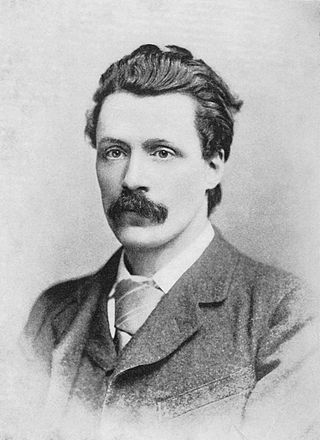
George Robert Gissing was an English novelist, who published 23 novels between 1880 and 1903. In the 1890s he was considered one of the three greatest novelists in England, and by the 1940s he had been recognised as a literary genius. Gissing's best-known works have reappeared in modern editions. They include The Nether World (1889), New Grub Street (1891) and The Odd Women (1893). He retains a small but devoted group of followers.

Eliza Haywood, born Elizabeth Fowler, was an English writer, actress and publisher. An increase in interest and recognition of Haywood's literary works began in the 1980s. Described as "prolific even by the standards of a prolific age", Haywood wrote and published over 70 works in her lifetime, including fiction, drama, translations, poetry, conduct literature and periodicals. Haywood today is studied primarily as one of the 18th-century founders of the novel in English.
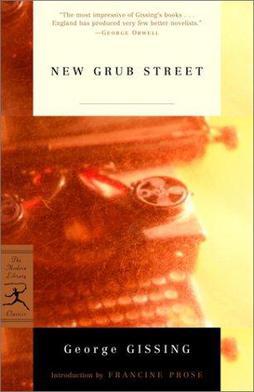
New Grub Street is a British novel by George Gissing published in 1891, which is set in the literary and journalistic circles of 1880s London. The story deals with the literary world that Gissing himself had experienced. Its title refers to the London street, Grub Street, which in the 18th century became synonymous with hack literature, although by Gissing's time, Grub Street itself no longer existed. Gissing revised and shortened the novel for a French edition of 1901.

Sarah Grand was an English feminist writer active from 1873 to 1922. Her work revolved around the New Woman ideal.

The Bad Seed is a 1956 American psychological thriller film directed by Mervyn LeRoy and starring Nancy Kelly, Patty McCormack, Henry Jones and Eileen Heckart.

Sara Jeannette Duncan was a Canadian author and journalist, who also published as Mrs. Everard Cotes and Garth Grafton among other names. First trained as a teacher in a normal school, she took to poetry early in life and after a brief teaching period worked as a travel writer for Canadian newspapers and a columnist for the Toronto Globe. Afterward she wrote for the Washington Post where she was put in charge of the current literature section. Later she made a journey to India and married an Anglo-Indian civil servant thereafter dividing her time between England and India. She wrote 22 works of fiction, many with international themes and settings. Her novels met with mixed acclaim and are rarely read today. In 2016, she was named a National Historic Person on the advice of the Historic Sites and Monuments Board of Canada.

Maria: or, The Wrongs of Woman is Mary Wollstonecraft's unfinished novelistic sequel to her revolutionary political treatise A Vindication of the Rights of Woman (1792). The Wrongs of Woman was published posthumously in 1798 by her husband, William Godwin, and is often considered her most radical feminist work.

The Nether World (1889) is a novel written by the English author George Gissing. The plot concerns several poor families living in the slums of 19th-century London. Rich in naturalistic detail, the novel concentrates on the individual problems and hardships which result from the typical shortages experienced by the lower classes—want of money, employment and decent living conditions. The Nether World is pessimistic and concerns exclusively the lives of poor people: there is no juxtaposition with the world of the rich.
The Man is a 1905 Edwardian novel by Bram Stoker, best known for Dracula. A typical Gothic novel, it features horror and romance. The Man has also been published as The Gates of Life.

Rhoda is a woman mentioned once in the New Testament. She appears only in Acts 12:12–15. Rhoda was the first person to hear Peter after God freed him from prison, but no one believed her account that Peter was at the door because they knew he had been put in prison and couldn't believe that he had actually been freed.

Born in Exile is a novel by George Gissing first published in 1892. It deals with the themes of class, religion, love and marriage. The premise of the novel is drawn from Gissing's own early life — an intellectually superior man born into a socially inferior milieu, though the story arc diverges significantly from the actuality.
Eve's Ransom is a novel by George Gissing, first published in 1895 as a serialisation in the Illustrated London News. It features the story of a mechanical draughtsman named Maurice Hilliard, who comes into some money, which enables him to live without working. As part of his resulting travels, he meets and falls in love with Eve Madeley, a book keeper.

Demos: A Story of English Socialism is a novel by the English author George Gissing. It is a story of the moral and intellectual corruption of a working-class Socialist who inherits a fortune. It was written between late 1885 and March 1886 and first published in April 1886 by Smith, Elder & Co.
